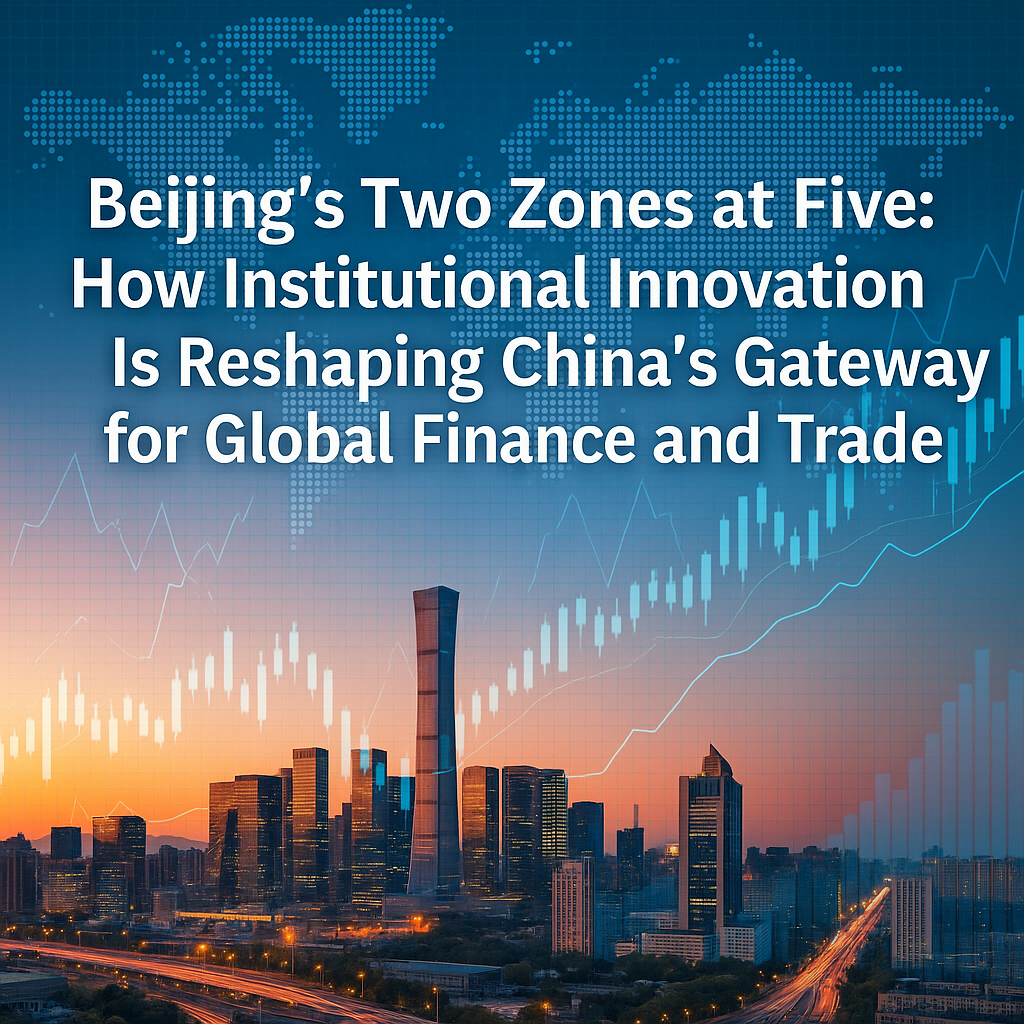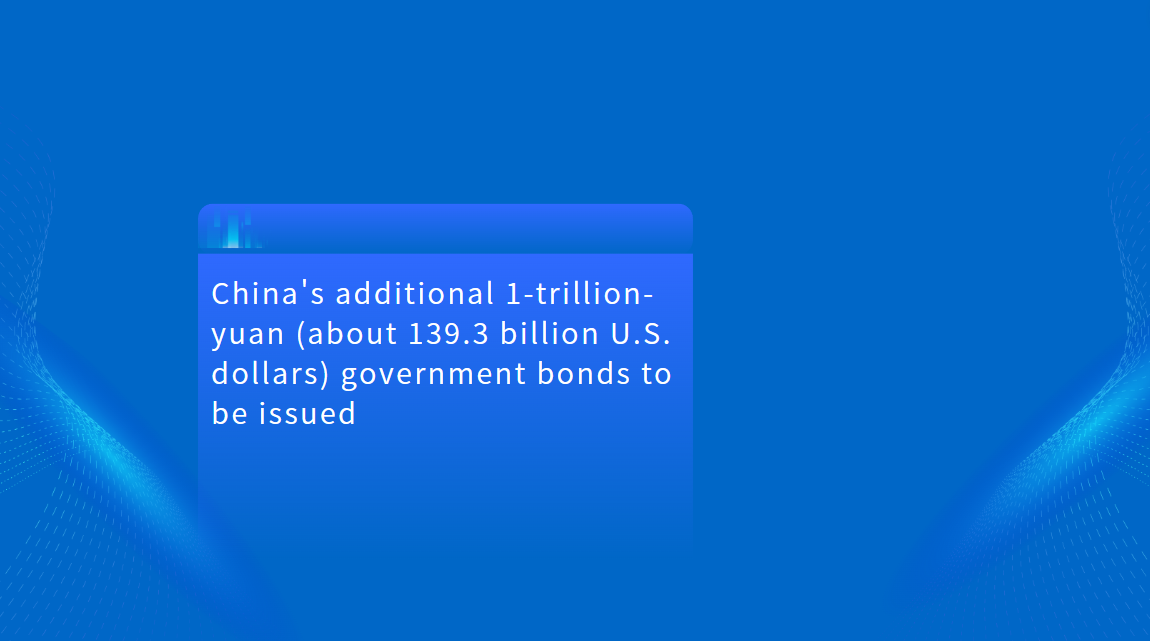Beijing’s Two Zones at Five: How Institutional Innovation Is Reshaping China’s Gateway for Global Finance and Trade
Beijing's “Two Zones” initiative—comprising the Integrated National Demonstration Zone for Opening Up the Services Sector and the China (Beijing) Pilot Free Trade Zone—has entered its fifth year. Initially viewed as a regulatory sandbox, the initiative has since evolved into a platform of national significance, catalyzing policy breakthroughs across finance, trade, investment, and professional mobility. For international businesses seeking a deeper foothold in China's high-value services and innovation ecosystems, the results are beginning to speak for themselves.

A Testbed Now Setting National Precedents
Since the launch of the Two Zones, Beijing has implemented over 70 pioneering policies, with more than 80 of its reform achievements adopted elsewhere in China. These measures include income tax incentives for technology transfer, streamlined certification for high-tech companies, and China's first pilot program for equity and venture capital share transfers—each aimed at removing systemic frictions between capital and innovation.
One particularly significant breakthrough lies in the mutual recognition of international professional qualifications. Beijing's dedicated catalogue on this front is the first of its kind in China, providing clarity and assurance to foreign professionals entering China's legal, financial, and technical services sectors. The move reduces regulatory uncertainty for global firms seeking to build cross-border teams, and facilitates smoother onboarding of international talent in industries where expertise is both scarce and strategic.
Financial Opening: A Quiet Transformation with Lasting Impact
In the past five years, Beijing has recorded a string of “firsts” in financial liberalization, including:
The first wholly foreign-owned currency broker
The first newly established, wholly foreign-funded futures company
The first wholly foreign-owned securities firm in China
Together, these milestones reflect a subtle but unmistakable trend: the center of gravity for China's financial opening-up is shifting towards more sophisticated, service-driven segments—and Beijing is positioning itself as the gateway.
As of 2024, nearly 200 domestic and foreign financial institutions had established a presence in the capital. According to official data, Beijing's foreign-related income and expenditure surged 67.4% from 2020 to reach USD 2.4 trillion, accounting for nearly 17% of China's national total. The proportion of cross-border CNY settlements—crucial for risk-hedged engagement with the Chinese market—has also risen sharply, from 49.7% to 65%.
This momentum is underpinned by both policy and infrastructure. Banks operating in Beijing have led the country in foreign exchange settlement and cross-border capital flows for four consecutive years. These flows increasingly reflect real economy activity rather than speculative transactions—a sign that reforms are delivering structural improvements rather than transient spikes.
Growth with Substance: A Financial Sector on the Rise
The impact of these reforms extends beyond capital flows. In 2024, the value-added output of Beijing's financial sector rose to RMB 815.42 billion—a 7.6% increase year-on-year, beating the national average by 2 percentage points. By the first quarter of 2025, the sector's contribution to the city's GDP had reached 17.9%, helping drive 1.4 percentage points of total economic growth.
Crucially, this growth is not merely nominal. Beijing now leads the country across several key indicators: the number of financial institutions, the scale of financial assets under management, and insurance sector penetration. Together, these data points suggest a financial ecosystem becoming more layered, more inclusive, and better equipped to support China's evolving economic structure.
Trade, Logistics, and the Global Interface
While financial reforms take center stage, Beijing has also re-engineered its trade and logistics architecture. The number of integrated bonded zones in the city has quadrupled in five years. Airport logistics have improved significantly, allowing Beijing to absorb and dispatch rising volumes of goods and people with greater efficiency.
In 2024 alone, Beijing Customs handled 35.1% more cargo and saw a 99.3% increase in individual cross-border trips compared to the previous year. Foreign trade volumes rose from RMB 2.32 trillion in 2020 to RMB 3.61 trillion in 2024.
These improvements are having real spillover effects. In the first five months of 2025, inbound and outbound travel exceeded 8.99 million trips, while tourist tax refund claims surged 91.6% year-on-year to RMB 470 million. The latent demand for consumer services, especially in tourism and luxury retail, is being unlocked by a more frictionless regulatory environment.
Why It Matters for Global Stakeholders
For international businesses—especially those in banking, legal, asset management, insurance, and high-end services—Beijing's Two Zones offer something unique: not just a window into China's economy, but a functional interface with its regulatory and capital systems.
The recognition of foreign professional credentials enables firms to deploy global teams more efficiently, while the rise of cross-border CNY settlements offers greater control over currency risk. The entry of foreign-controlled brokers, futures firms, and securities companies indicates a tangible lowering of market access barriers—creating space for partnerships, co-investments, and service provisioning with fewer licensing bottlenecks.
As Beijing continues to set the tone for financial policy innovation, companies operating there are better positioned to influence regulatory trends across the rest of the country. The city's role as a policy incubator—especially for cross-border capital flow management and services liberalization—makes it an indispensable node in any serious China strategy.
A Final Word: From Laboratory to Launchpad
Five years into its Two Zones journey, Beijing has evolved from an experimental pilot into a national policy engine. Its fusion of regulatory innovation, professional openness, and capital accessibility is quietly redefining how China engages with the global economy.
For firms attuned to these shifts, the opportunity lies not just in market size, but in institutional alignment—aligning with a version of China that is gradually becoming more rules-based, more interconnected, and more open to strategic global capital.




















































First, please LoginComment After ~